Glock, officially Glock Ges.m.b.H, stands as one of the best known — if not the best-known — firearms manufacturers in the world.
Even people who know basically nothing about guns usually recognize the word “Glock.”
Glocks appear in TV shows, movies, and music, but also widely populate the realm of law enforcement worldwide.
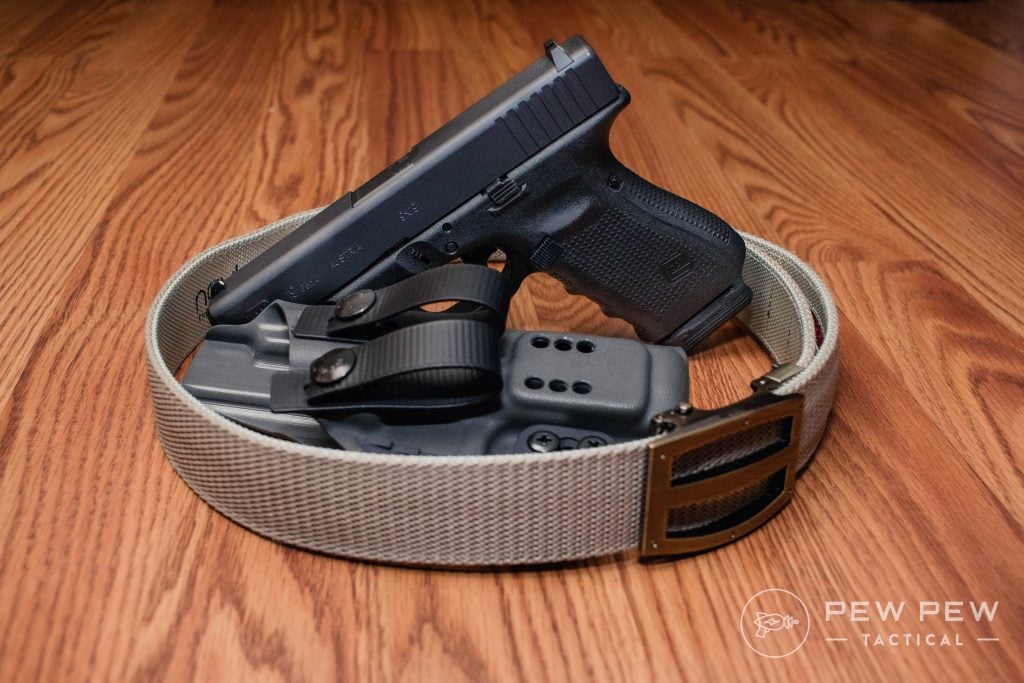
Yet compared to many firearms manufacturers, Glocks haven’t been around that long, less than four decades.
So how did Glock get from a brand new, unknown gun maker to the best-known firearm manufacturer in less than 40 years?

Let’s look at the journey Glock has taken to get where it is today.
Table of Contents
Loading…
Gaston Glock
To start, we need to go back more than those 40 years.
Gaston Glock was an Austrian engineer born in July 1929. He was not, as his name sounds, a comic book character.
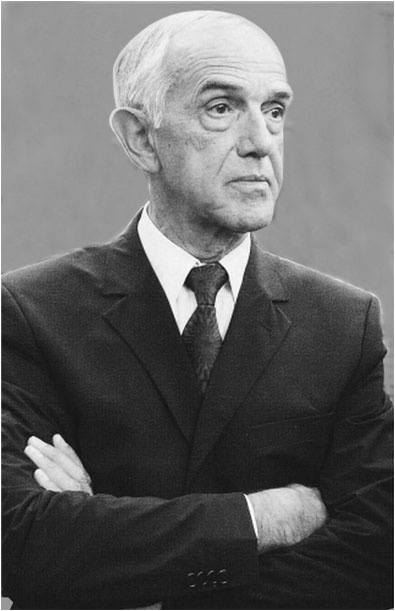
He founded Glock Ges.m.b.H all the way back in 1963, but he didn’t start out making guns.
At that time, Glock manufactured and sold curtain rods and other consumer goods, primarily using wood, metal, and polymer.
In the beginning, the company employed just three people. All three previously worked in the camera industry, giving them experience working with polymers.
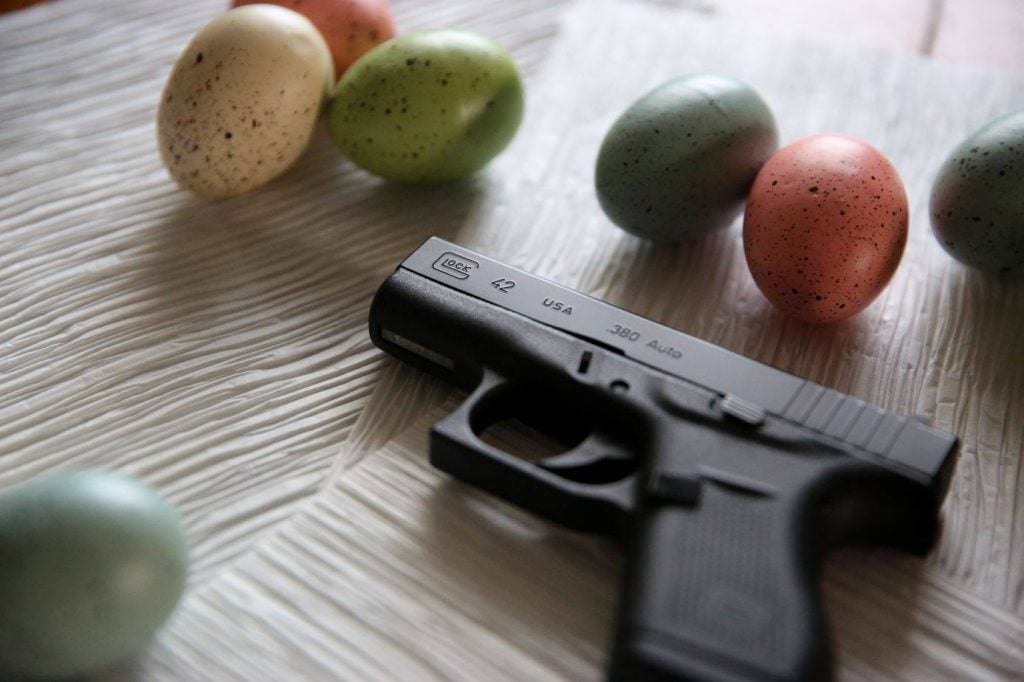
In the 1970s, Glock began working with the Austrian military, producing grenade casings, machine gun belt links, and field knives.
This move positioned Glock to expand into firearms.
Moving Into Firearms
In 1980, Austrian military leadership put out a notice looking for a new duty pistol to replace the Walther P38 pistol they’d used since World War II.
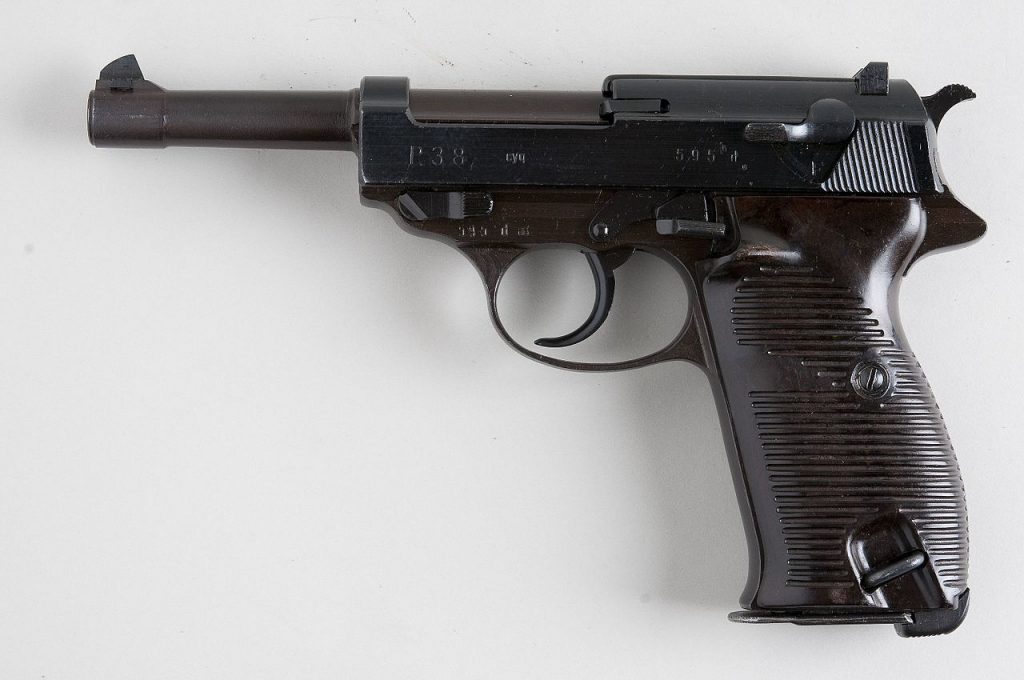
Along with their announcement, Austria’s Federal Ministry of Defence published a list of the 17 criteria they wanted from the new pistol. Some of those included that the pistol:
- fire NATO-standard 9x19mm Parabellum,
- be self-loading,
- use magazines that didn’t require assistance to be loaded, and
- prevent accidental discharge when faced with strikes, shocks, and drops onto a steel plate from two meters in the air.
Pistols would be tested by firing 15,000 rounds of ammo. After which, the pistols would be examined for wear before firing an overpressure test cartridge.
Upon hearing about the search, Gaston decided to meet the challenge.
At the time, Glock had no experience making firearms. However, he put his knowledge of polymers to use.

He also didn’t just use the Austrian Armed Forces’ requirements to guide the design process.
Gaston also asked firearm experts in Austria what improvements could be made to existing pistols to create a more modern gun.
From those experts, he learned that his pistol needed to be easy to fire and easy to learn to use.
It also needed to have a higher capacity than existing pistols and offer more durababilty and reliablility than existing platforms.
If you’re familiar with Glock pistols already, you know these are features Glocks are known for. So, Gaston clearly incorporated this feedback into the pistol.
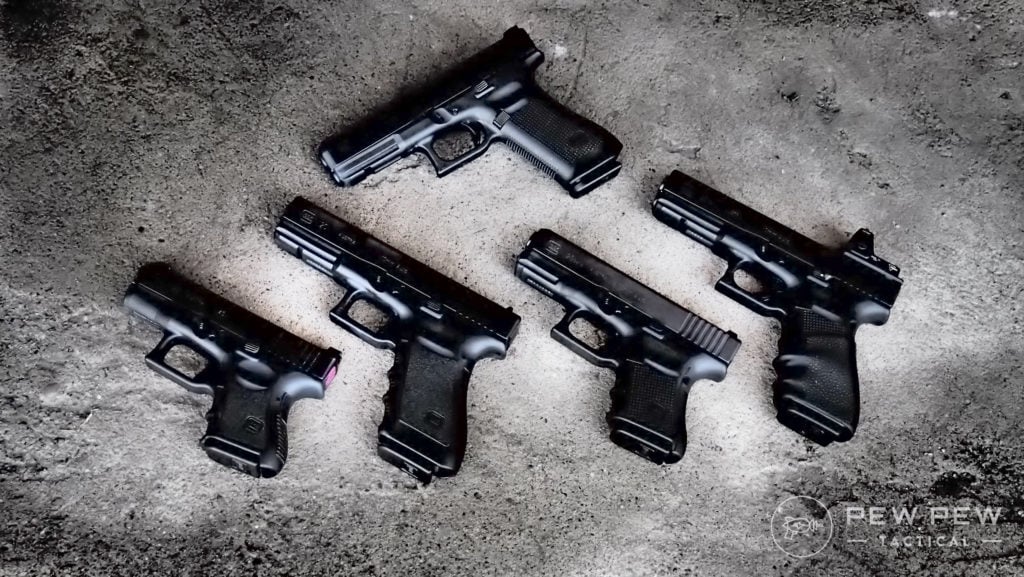
With all of this in mind, Gaston designed the first pistol — the Glock 17. So named because it was Glock Ges.m.b.H’s 17th patent.
It took about a year to design, but Glock finally applied for the patent in April 1981.
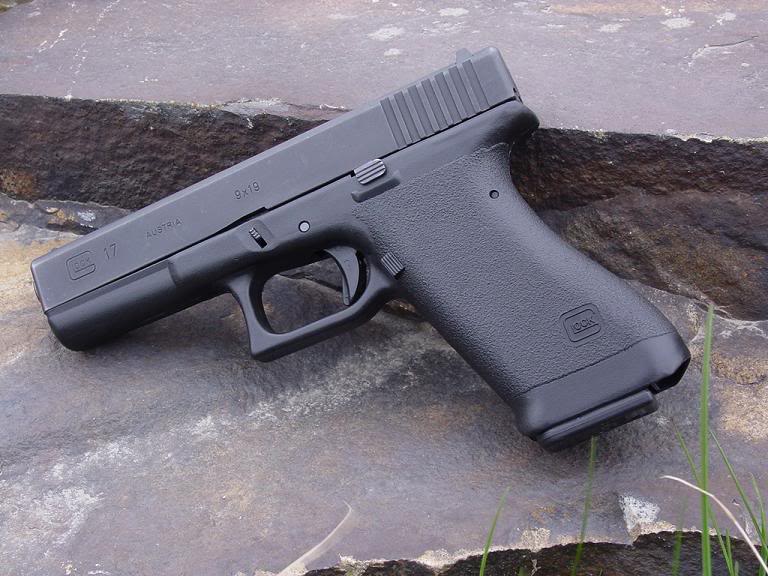
The original Glock G17 had a 17-round capacity and just 16 parts.
It brought no decocking mechanism or external safety. Instead, it incorporated three internal safeties — trigger, firing pin, and drop safeties.
Additionally, the Glock G17 was also resistant to submersion and extreme temperatures.
Prices accurate at time of writing
Prices accurate at time of writing
-
25% off all OAKLEY products - OAKLEY25
Copied! Visit Merchant
Glock also incorporated a ferritic nitrocarburizing surface treatment on the metal parts to prevent corrosion, making him the first firearm manufacturer to do so.
Once completed, the Glock 17 underwent the Austrian military’s tests and, in 1983, it became the Austrian Army’s standard service pistol.

The next year, the G17 also passed NATO’s durability test. This led the Norwegian Army to adopt it as their standard sidearm as well, and ultimately resulted in the new Glock pistol gaining international recognition.
Not too bad for Gaston’s first ever firearm design.
Glock in the U.S.
In 1986, Glock expanded into the States by opening its U.S. headquarters in Smyrna, Georgia.
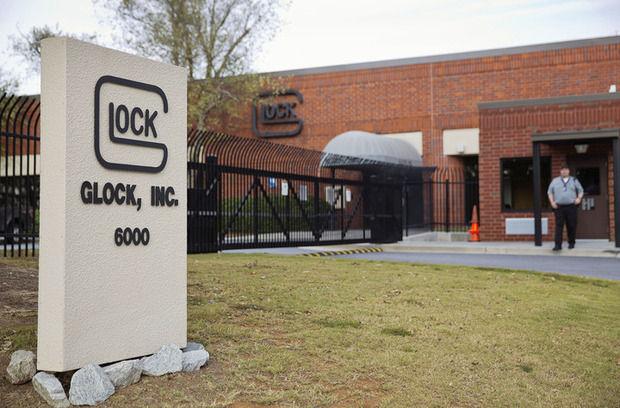
Around the same time, Glock expanded size and caliber options. And finally, in 1988, the company released its Gen 2 line of pistols.
Gen 2 included a few improvements on the original Glock 17, particularly on the frame.
These included checkering on the front strap, back strap, and trigger guard, as well as additional serrations on the back strap.
The new generation also incorporated a steel plate with a serial number into the receiver to meet ATF requirements.
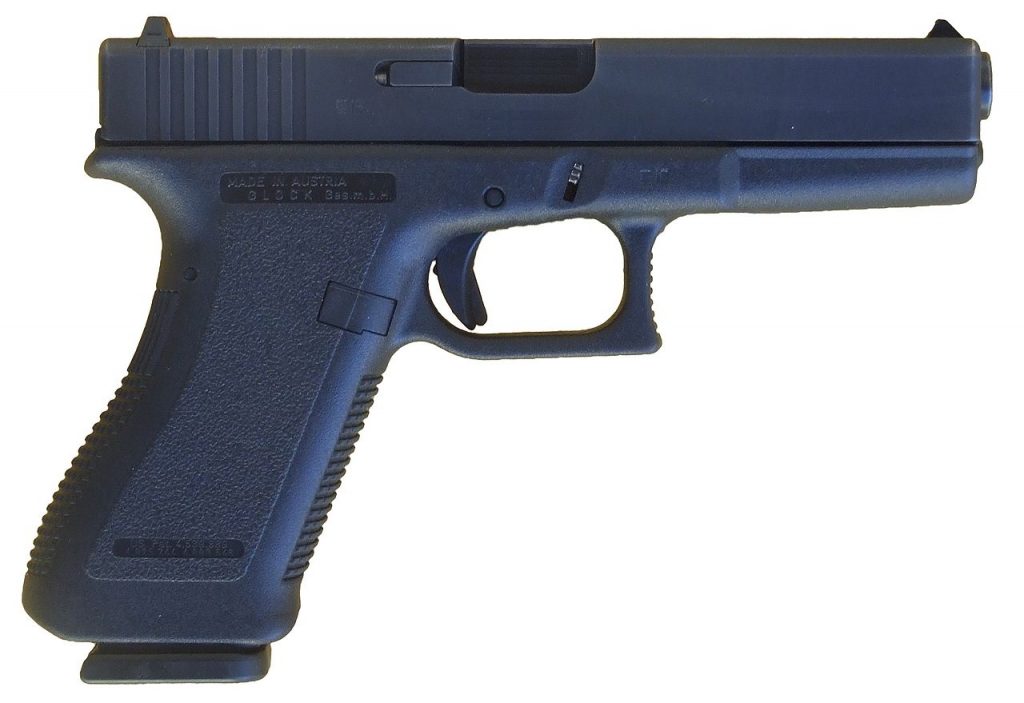
Adoption by Law Enforcement
The lightweight, easy to use design and high capacity of the Glock appealed to American law enforcement.
Police faced a rising drug trade and organized crime which were becoming better armed than law enforcement officers with increasing frequency.
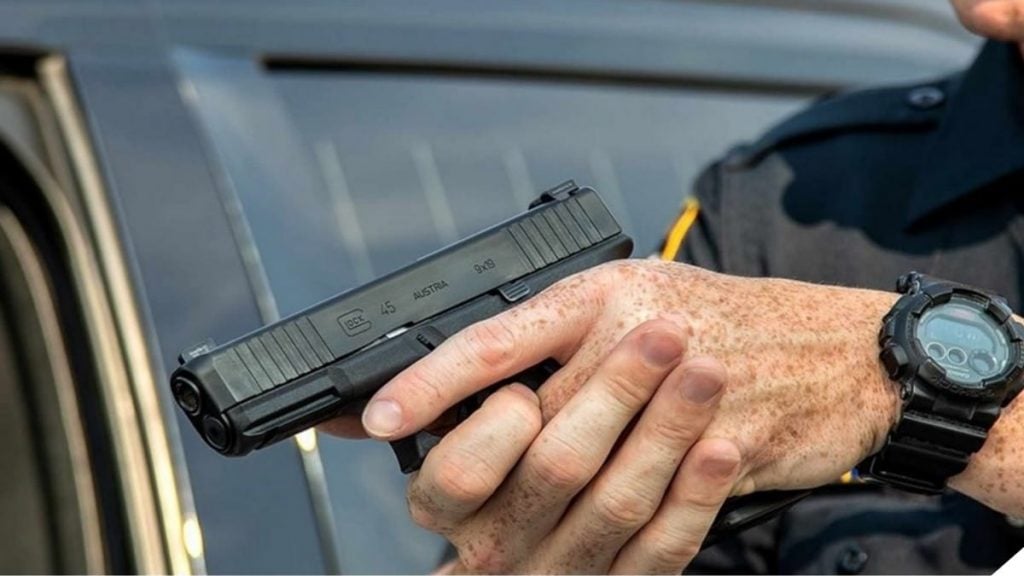
Law enforcement organizations quickly began testing and adopting Glock pistols.
And in case Glock’s design itself wasn’t enough, the Glock corporation provided extra incentives to encourage sales.
For example, Glock offered sizable discounts for bulk purchases made by police departments.
They didn’t just use financial incentives though. Glock vice president Karl Walter often hosted police procurement officers at a strip club in nearby Atlanta. At trade shows, spokesmodels were used to sell guns.
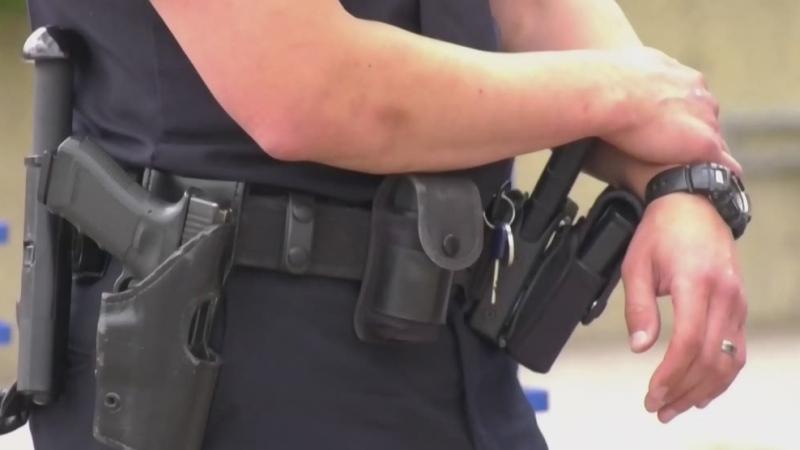
While perhaps not a particularly politically correct sales tactic, the presence of beautiful women certainly helped Glock make sales.
But using these tactics didn’t just help with sales to police.
Adoption of a firearm by law enforcement tends to make civilians feel more trusting that design. Thus, civilians then want to buy the gun for themselves. And that’s where Glock got its especially lucrative full-price sales.
Glock In Pop Culture
Another way Glock ensured its pistols appealed to the civilian market? Ensuring they showed up on the big screens.

Starting in the early 1990s, Glocks quickly began to appear on TV and in the movies.
In 1990, cops in police procedural shows like Law and Order started carrying Glocks.
Not only does Bruce Willis’s character, John McClane carry a Glock in Die Hard 2, he even monologues about the perks of his Glock.

At the same time, Glocks popped up in music as well, especially rap music. This was less intentional on the corporation’s part, but it helped them nonetheless.
Let’s face it, “Glock” is pretty easy to rhyme.
Glock & Gun Control
Since the Glock was quickly adopted by criminal organizations and law enforcement alike, it’s probably no surprise that it only took a few years for a Glock to be used in a particularly notable crime.
In 1991, a Glock was used in a shooting in Texas, resulting in the deaths of 20 people.
It’s probably also no surprise that Congress quickly began debating whether or not Glocks should be legislated.
These debates led to the adoption of the Assault Weapons Bill in 1994 under the Clinton administration, which included a 10-round capacity limit on pistol magazines.
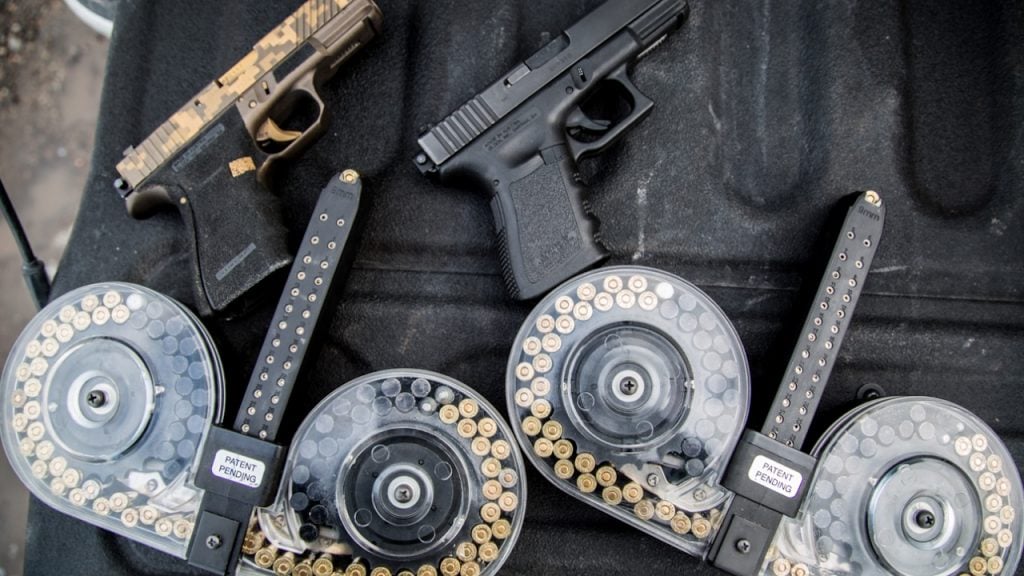
Since the large magazine capacity was a major selling point for Glock, it seemed like this would be a major blow to the company.
However, Glock’s leadership had the foresight to know what was brewing. Its leadership spent the previous years manufacturing as much stock as they could.
When the Assault Weapons Bill arrived, it had an important caveat: Previously manufactured items were not affected by the bill.
That meant that Glock had a large stockpile of things that were now illegal to produce, while their competition had little stock remaining.
This allowed Glock to raise the price on these items and sell them at a premium.

Sales to law enforcement were also exempted. So, Glock began aggressively selling new firearms and equipment to police departments and getting them to trade the old stuff in.
They then sold the older firearms, manufactured pre-1994, on the civilian market.
The introduction of Glock’s Gen 3 lineup in 1998 also helped Glock make sales to police departments.
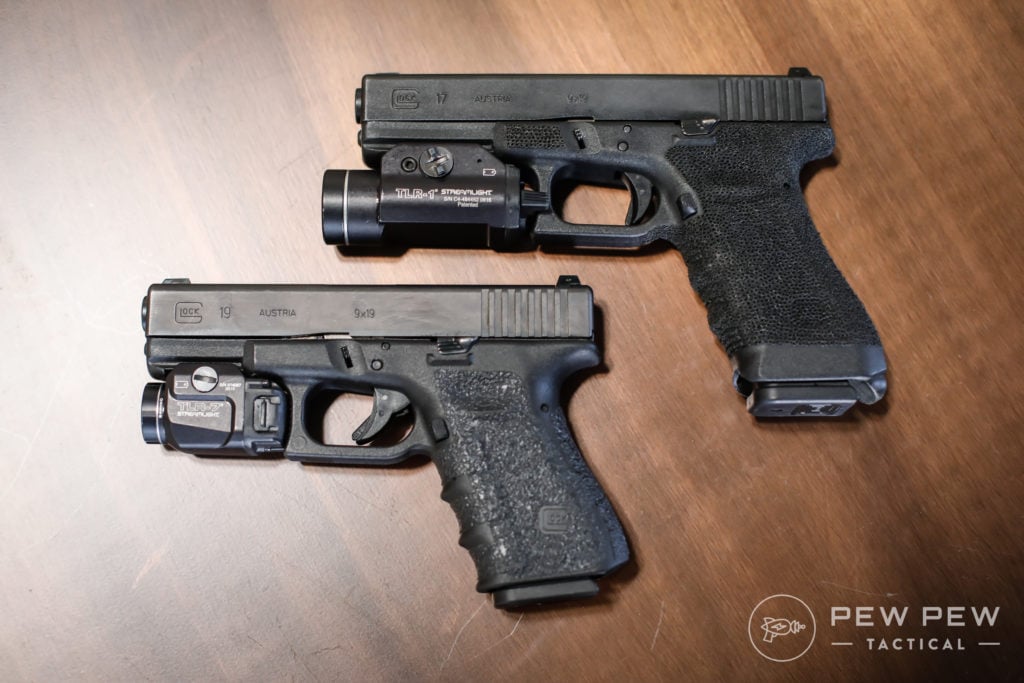
Gen 3 added an accessory rail , thumb rests, and finger grooves initially.
Later on, Glock also added a new extractor that also provided an indication of a loaded chamber, an extra cross pin above the trigger pin, and a larger locking block.
With the Gen 3, Glock also introduced pistols in flat dark earth and olive drab in addition to their previous drab, as well as dummy and practice pistols for training.
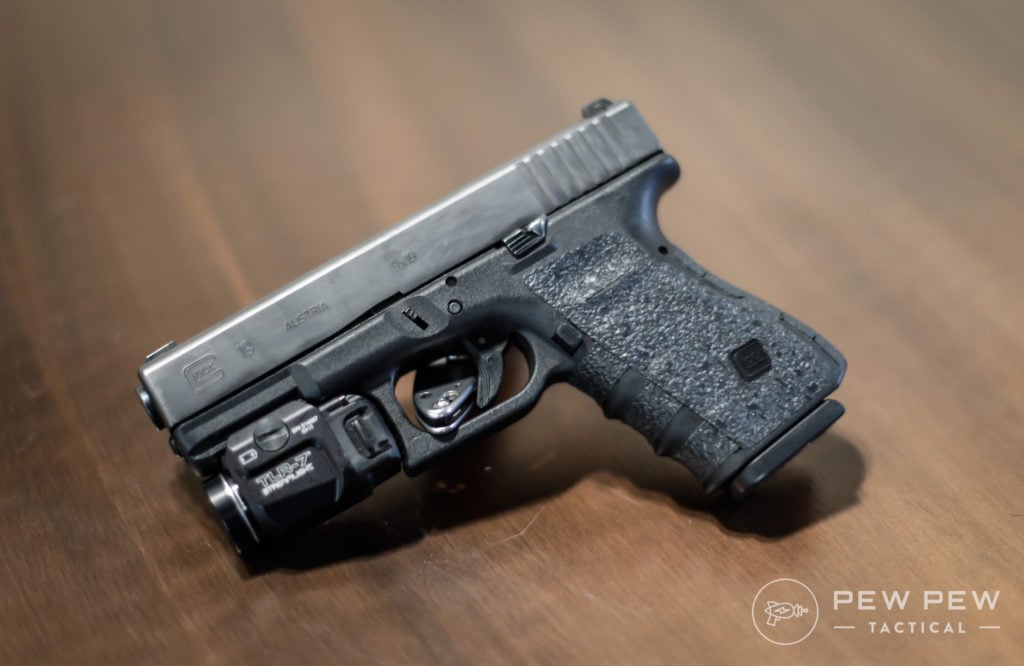
Assassination Attempt
While mostly a blip in Glock’s history, we can’t move past the 1990s without mentioning one particular event.
Throughout its history, numerous upper lever Glock officials have embezzled funds from the company.
In response, Gaston Glock called a meeting of upper management in 1999 in order to discuss the latest embezzlement issues.

Of course, the official doing the embezzling, Charles Ewert, who served as the company’s tax advisor didn’t feel happy about that.
He contracted a French mercenary, a 67-year-old man named Jacques Pêcheur, to kill Gaston Glock.
In July 1999, Pêcheur attacked Glock with a hammer in a parking lot.
Glock, almost 70 at the time, suffered serious damage, including seven head wounds and a liter of lost blood. Still, Glock was able to fend Pêcheur off with a couple of hits of his own.
Pêcheur would later be sentenced to 17 years in prison. His testimony led Ewert serving 20 years of his own.

Glock Today
Over the last 20 years, things have been quiet but good for Glock Ges.m.b.H., especially with the lift of the Assault Weapons Ban in 2004.
In 2010, the company introduced their fourth generation of pistols.
The highlights included a recoil spring assembly, a rough-textured frame, and a textured grip. Its grip was smaller than in the past and came with interchangeable backstraps to suit different hand sizes.
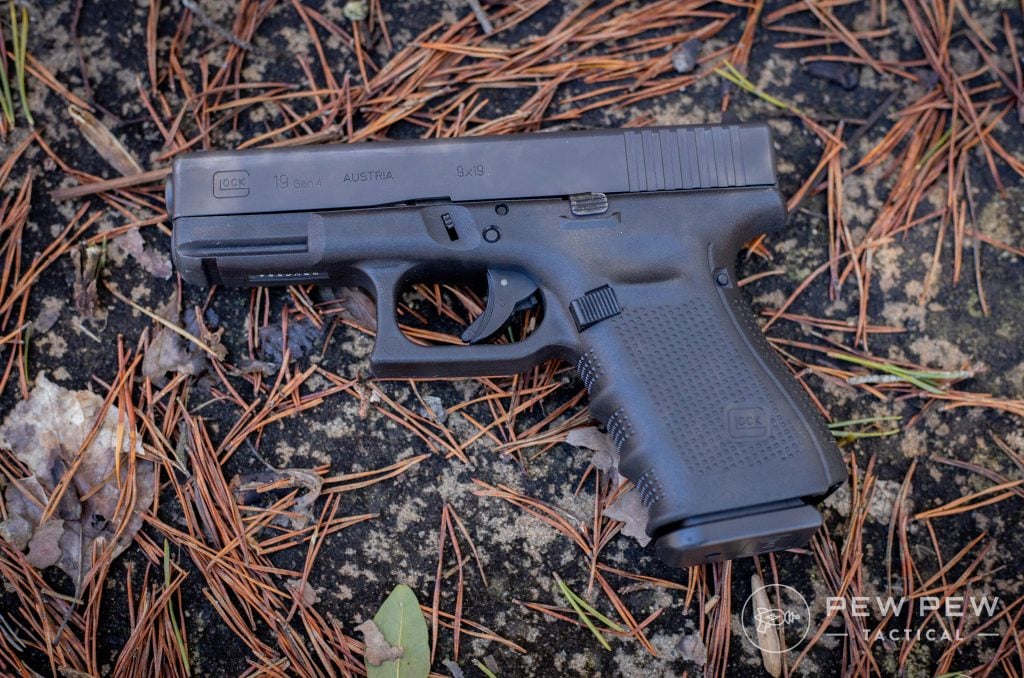
It was also the first generation where Glock leaned into the generational branding, and these pistols had “Gen 4” written out on the slide beside the model number.
In June 2016, the Federal Bureau of Investigation contracted Glock to procure custom 9mm Gen 4s as the Bureau’s standard duty pistol.
In 2017, Glock announced the Gen 5, the most recent generation of pistols.
Among the improvements made with the Gen 5 include a recessed cutout on the bottom front of the grip, removal of the finger grooves, ambidextrous slide stop levers, a flared magwell, a new diamond-like carbon finish on the barrel and slide, and new polygonal rifling in the barrel.
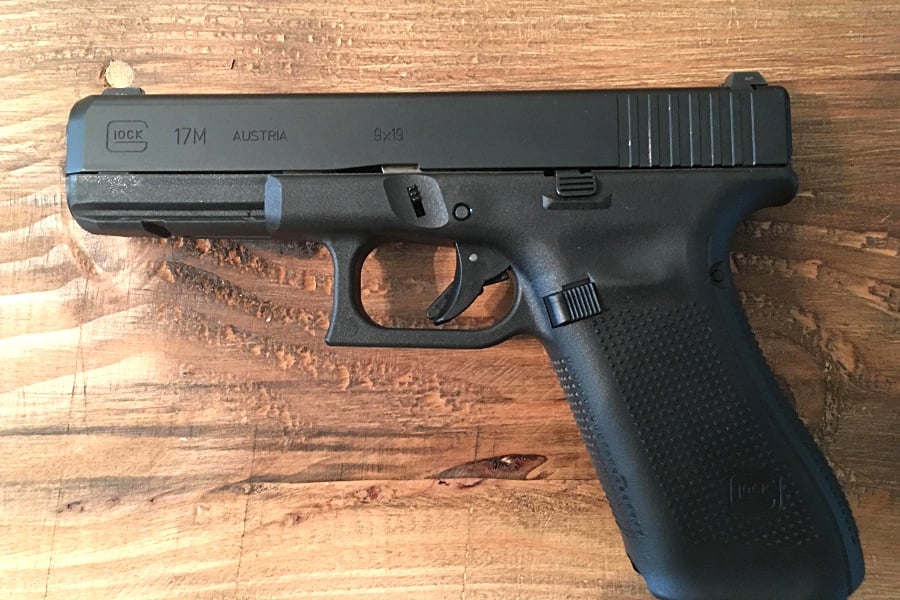
There were also some less noticeable changes made on internal parts. These prevent many of them from being interchangeable with previous Glock parts.
These days, more than 65% of law enforcement agencies within the U.S. use Glock handguns, along with dozens of law enforcement and military groups in other countries.
Glocks are also among the most popular handguns for civilians as well.
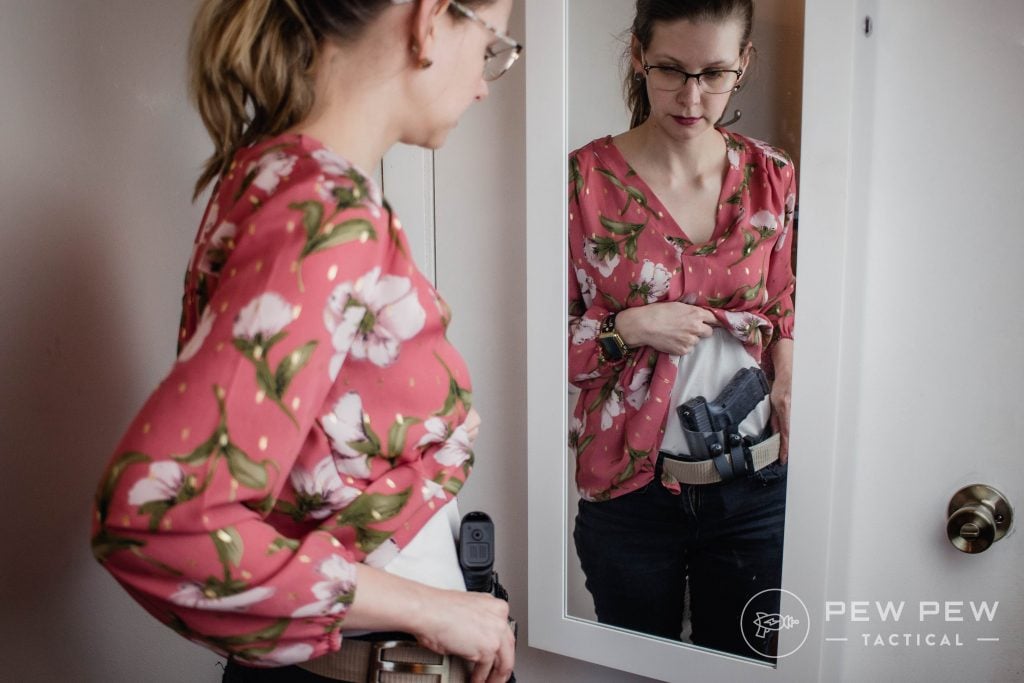
The Glock 17’s compact little brother, the Glock 19, has become the company’s most popular handgun.
Prices accurate at time of writing
Prices accurate at time of writing
-
25% off all OAKLEY products - OAKLEY25
Copied! Visit Merchant
Final Thoughts
Using a little ingenuity and some clever marketing, Glock stood the test of time and endures as one of the most popular pistol brands on the market.
Under the premise of “Perfection,” Glock continues to bring polymer-based pistols to the people.
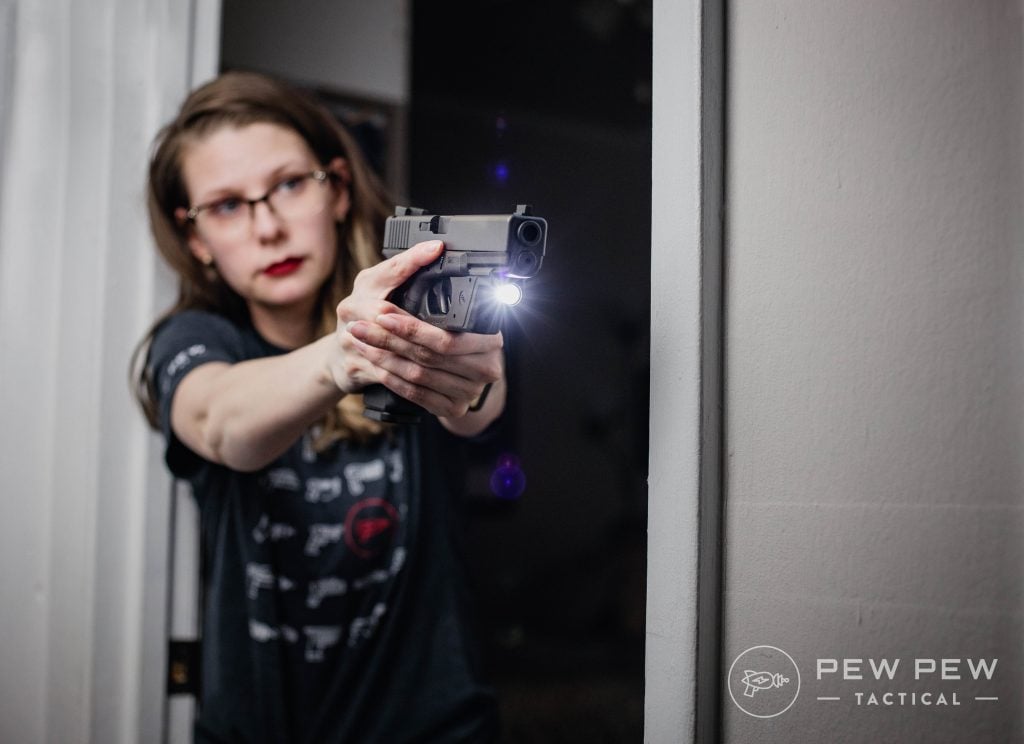
What are your thoughts? Let us know in the comments! Want to learn more about Glock? Check out our Comparison of Glock Gen 3, Gen 4, and Gen 5 and for a review of some of Glocks most popular pistols, take a look at the Best Glocks Across Calibers and Sizes.

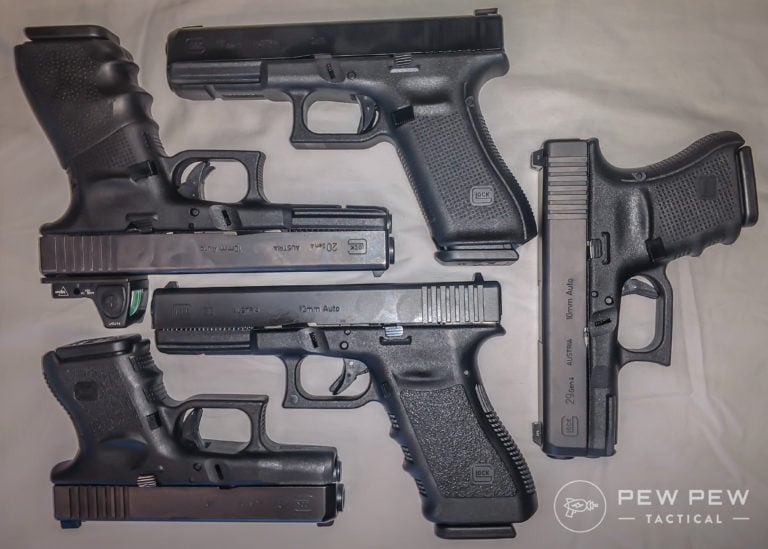
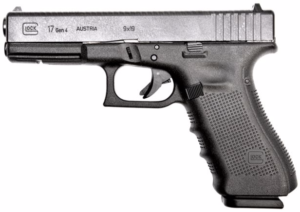








9 Leave a Reply
I thought in diehard McLane was always carrying a Beretta 92sf?
He did carry a Beretta. In DH2 the bad guys who took over the airport were using Glocks.
Very informative article on the history of Gaston Glock and the rise of the Glock Pistol.
It always helps when your business model is better than your product. The 1994 ban kept Glock competition at bay for 10 years, allowing Glock to solidify their market share. Notice how the article ignores the AD issues the Gen 1 Glocks all had. This is puff piece, and Gaston Glock is no patriot. Just Google the Glock Frisbee Test...Reduce Recoil Magazine.
I own a G19 Generation 2. It was my service Gun in the NYPD. Now retired over 15 years, I still to this day carry this same pistol. With a few changes of course.
What were your changes?
Not a fan of Glocks myself, but the design was very innovative for the 80s and has led to the creation of many very good pistols by other brands.
Good article. What wasn't mentioned was reliability. Prior to glock, semi auto pistols handled ball ammo fine, wanting to use hollow point ammo usually required a trip to a gunsmith. Glocks fed hollow point ammo just fine, this forced the other firearms companies to up their game. Unless you were Smith and Wesson. They were happy to try and rip off Glock with the Sigma 9mm. This led to a lawsuit by Glock, S&W lost. Overall the big winners were us, we have a huge variety of very good pistols to choose from.
came to the comment section to say the same thing, Other Mike. lol